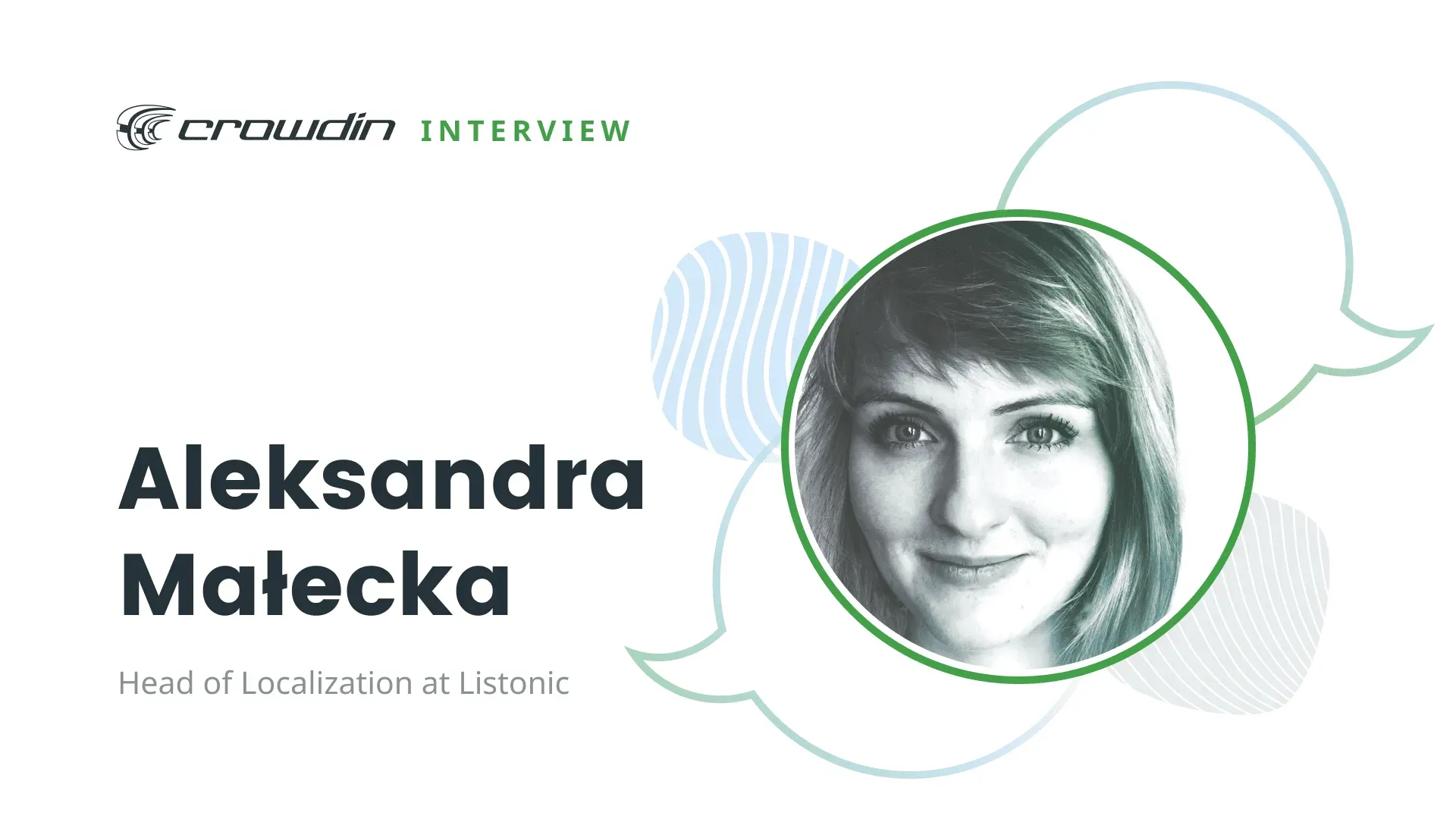Aleksandra Małecka is Head of Localization at Listonic – the smart shopping list app that’s saved many a busy family’s weekly shopping trips from total meltdown. Or perhaps a more fitting job title for Aleksandra would rather be Head of Localization & Community Builder Extraordinaire.
In this blog, Aleksandra shares her secrets on building a crowdsourced community of user translators and how it shapes the very way Listonic’s apps are developed.
A Path to User-Generated Translations
Aleksandra fell into localization almost by chance, having graduated in business management and consulting, and searching for exciting new opportunities. “I really wasn’t looking for a job in localization, but it sucked me in, and I ended up staying,” recalls Aleksandra.
In the four years Aleksandra has been managing Listonic’s localization program, it has grown from three languages to over 35, and from one app to four.
At Listonic, Aleksandra is the queen of all she surveys. Her work includes UX writing and translation in Polish and English, building communities of volunteer translators and managing translation projects, and global app content management and App Store Optimization.
"My focus is not just on localization, but on building a community of users.
Listonic’s approach to localization is a unique one and almost entirely based on community crowdsourced translations. It makes sense that for Aleksandra, her job is about people, not localization – developing Listonic’s apps to make people’s everyday lives easier.
“My focus is not just on localization, but on building a community of users, and reaching out to that community for user-generated translations,” she says.
10 Years’ Worth of Shopping Lists
Born out of the need of three Polish students on an Erasmus exchange in the UK, Listonic’s history stretches back ten years with its Shopping List app. And its original purpose still resonates with its users – reinventing shopping lists and creating an app that’s as simple and easy to use as possible but with features that make a real difference to how people live their lives.
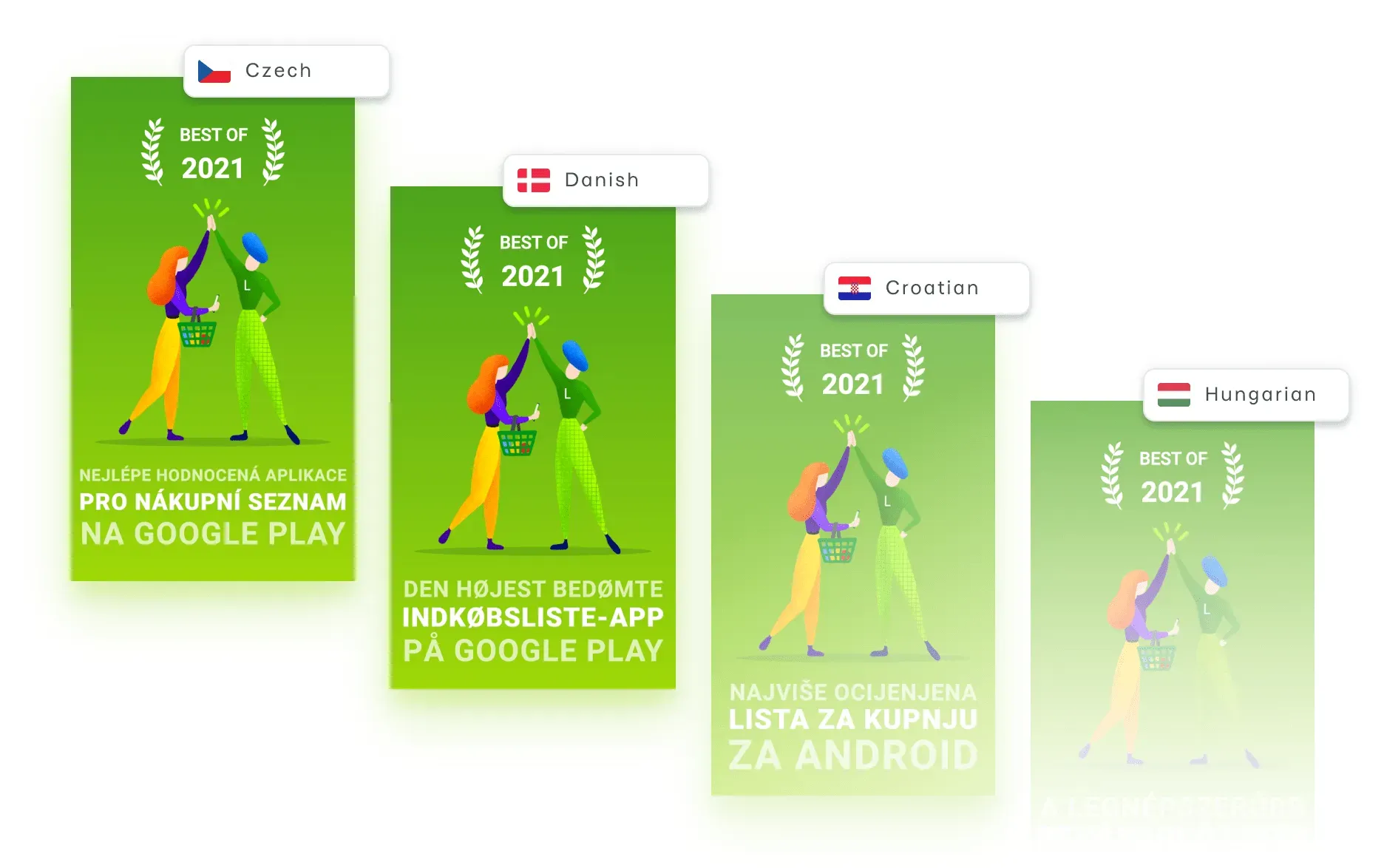
Today, a mature localization setup, powered by modern localization tools, has enabled Listonic to develop several further shopping and lifestyle apps, including an app with sales promotions and special deals, a water tracker, and a pregnancy tracker.
Listonic’s focus is on user experience, with a largely user-driven expansion strategy. Its main markets are Poland and the US, but thanks to an active community of user translators, Listonic is also hugely popular in many smaller European countries such as Czechia and Hungary.
Japan is an emerging market for Listonic. “We recently did some App Store Optimization in Japanese, and I was really surprised how well it worked, especially considering how, in the ASO community, Japan is a bit of a hard nut to crack. But we’ve made some great inroads and seen Japan jump quite high for Listonic downloads on Google Play,” Aleksandra celebrates.
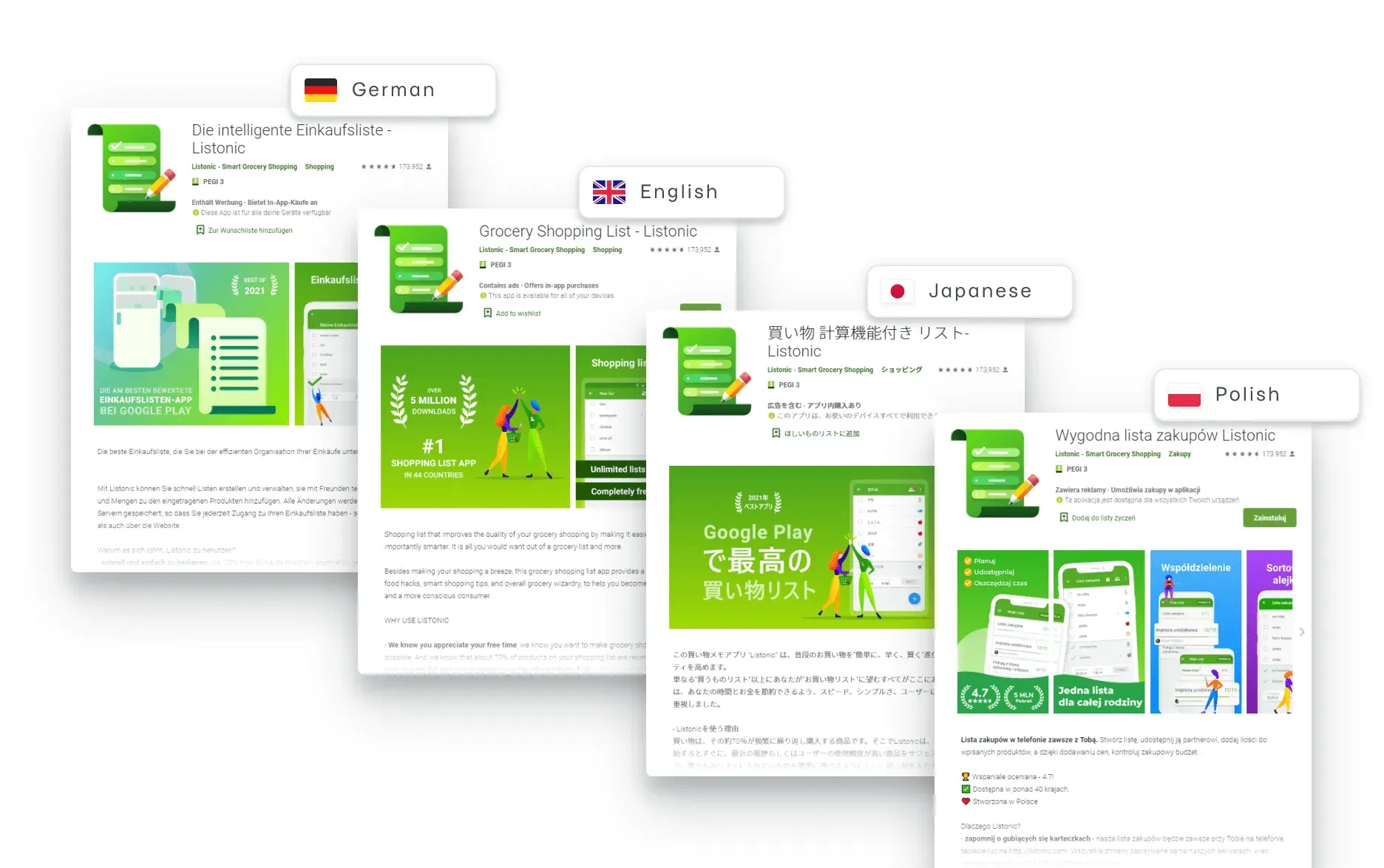
Community Crowdsourcing = Translations by Product Experts
Listonic’s app translations are almost entirely user-generated, and Aleksandra’s role, not just as a localization manager but as a community builder, is critical.
"Our users have always been really motivated in having the app in their language. Sometimes, a really engaged user will translate the whole app before others have a chance to join in for that language.
“Listonic was one of the first our apps to crowdsource translation,” says Aleksandra. “Our users have always been really motivated in having the app in their language, and I have collaborators wanting to join our project all the time. Sometimes, a really engaged user will translate the whole app before others have a chance to join in for that language.”
Users are invited to help translate Listonic into their language via the app, which takes them to a customized self-service platform in Crowdin to start the onboarding process. To date, there are over 2000 project members for 59 locales.
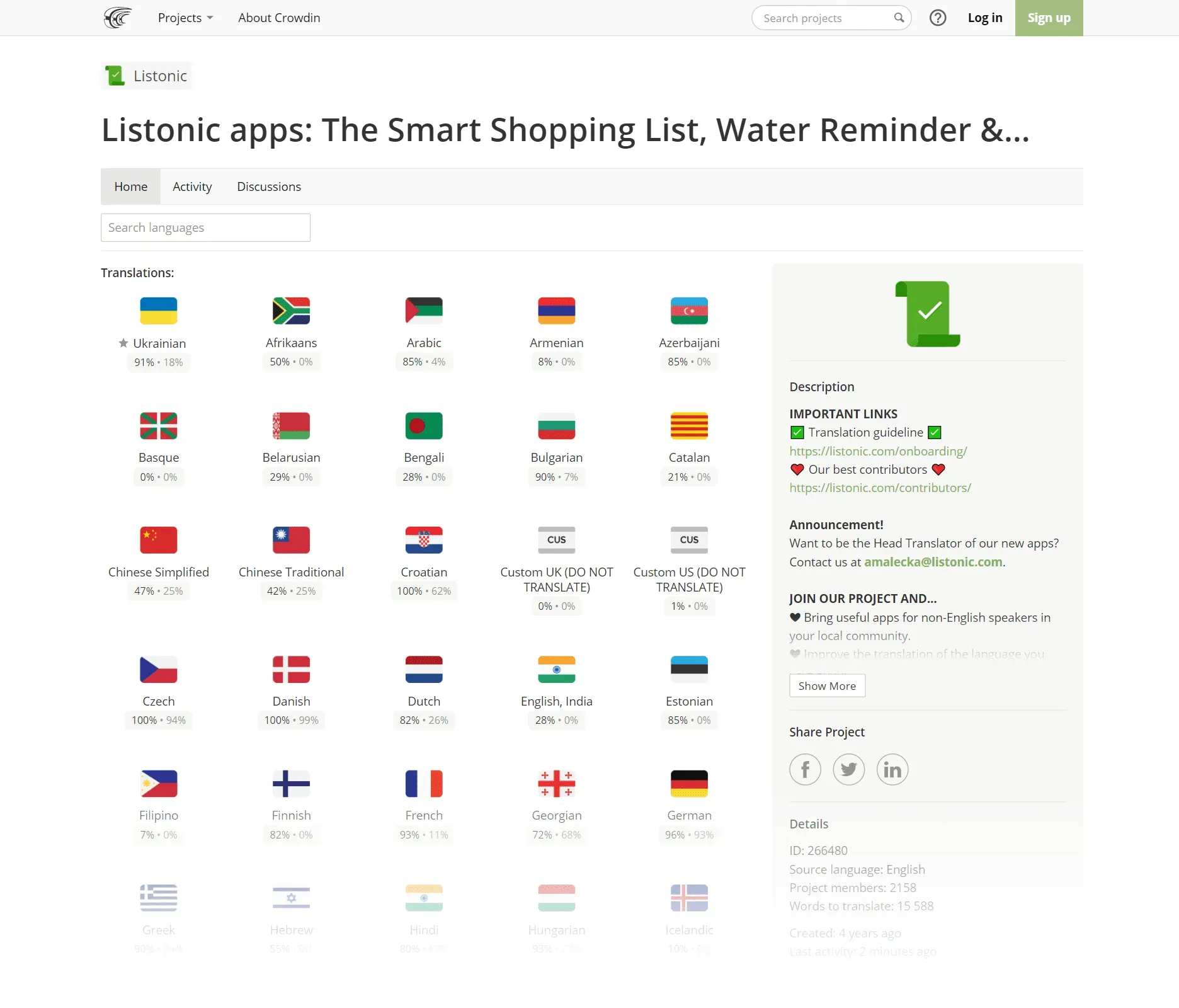
"In localizing apps like ours with such concise content, you really need to know the product and its context. Our users are experts in that.
The key to crowdsourced translation success is community engagement and management. The volunteer translators are part of Listonic’s story.
“In localizing apps like ours with such concise content, you really need to know the product and its context. Our users are experts in that,” says Aleksandra.
“But for me, the main thing is the community – we really like our users. In building the community, I focus on creating relationships, learning about our collaborators and their lives, and valuing their input.”
Some user translators have been with Listonic for several years and are able to proofread others’ translations. Many in the community also appreciate the opportunity to gain experience in App Store Optimization, and Aleksandra’s willingness to share statistics and information.
A Managed Localization Experience in Crowdin
Working with a volunteer community, Aleksandra puts a lot of effort into ensuring that the localization process runs as smoothly as possible in Crowdin, which has been part of the localization workflow at Listonic from the early years.
"Crowdin’s context and screenshot tools are really important for our (localization) process.
For localization, Aleksandra creates a second, simplified English version, which minimizes any translation issues. Because she writes content in both English and Polish, and translates much of the Polish content herself, she can anticipate and fix any issues before they get to translators in other languages.
“Crowdin’s context and screenshot tools are really important for our process,” says Aleksandra, who is also always available for translators’ questions via Crowdin.
“Because we work with community translators in a self-service environment, there are of course certain things that we always try to do before translation, apart from using the simplified English version as source. These are things like building variables into the user interface strings so that they will not destroy the UI regardless of the structure of the language,” explains Aleksandra. “And quite often our translators point issues out to us, so we have a chance to fix them before others stumble on the same things.”
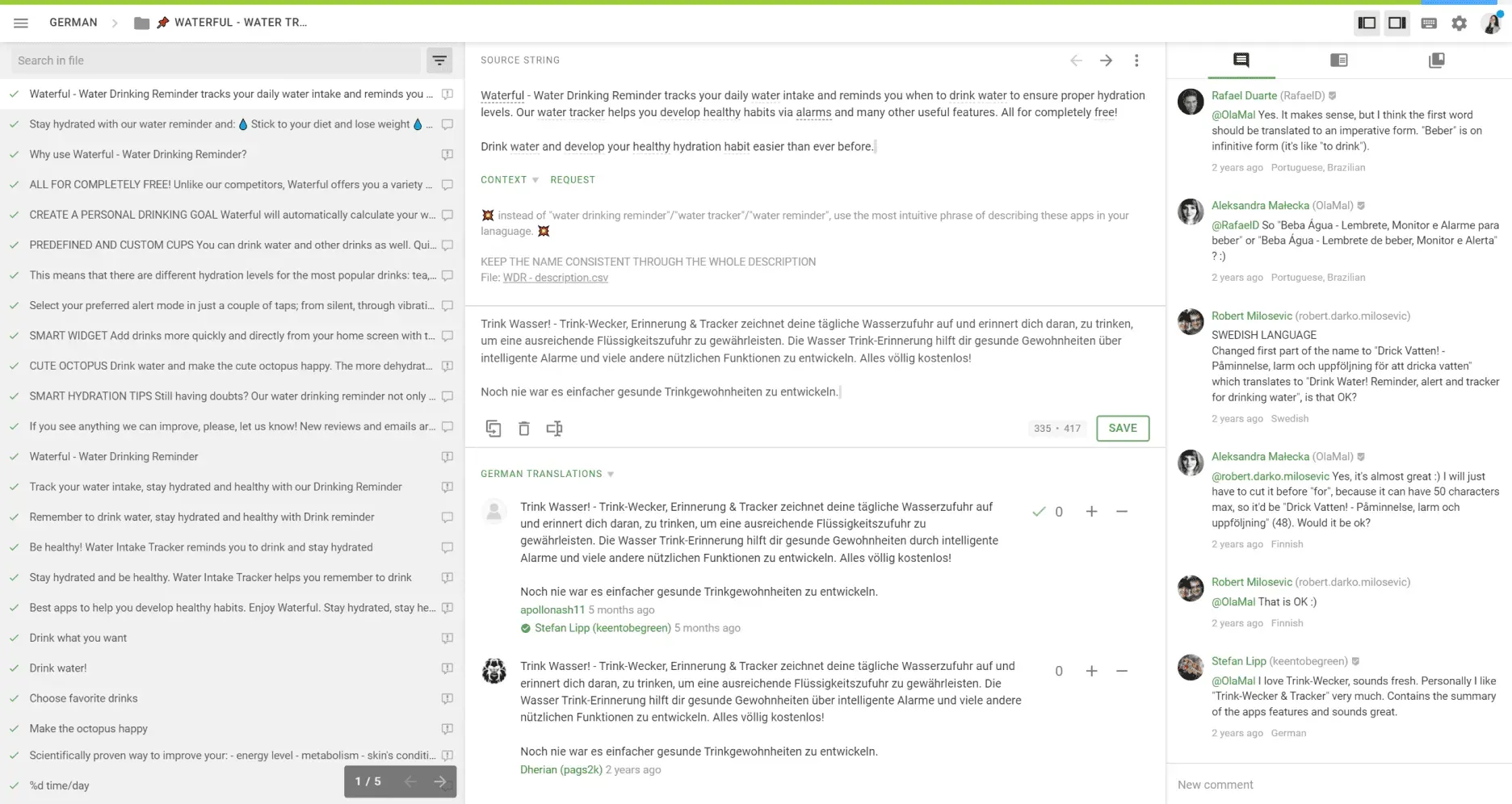
All translators also have access to Google Translate suggestions via Crowdin, which they can freely use or discard.
Quality is the Sum of User Experience
User experience is at the heart of Listonic’s approach to localization quality and metrics.
“We maybe work a bit backwards, because we first translate, then release the language, and then we analyze the reviews or email feedback for comments about translation,” explains Aleksandra.
At Listonic, localization forms an integral part of the company’s App Store Optimization strategy, and metrics around store listing visits and conversion rates are key indicators of success, along with app downloads, retention rates, and uninstalls, which are meticulously tracked.
“If there are any issues with the app metrics, it’s possible that we can fix things by improving the translation, for example, by proofreading all content in that language,” says Aleksandra.
As a consumer product, there is less pressure on achieving perfection in the translation in terms of convincing someone to buy the app. According to Aleksandra, this is especially true for lifestyle apps like Listonic’s. Mistakes are less visible, and don’t really show in the number of uninstalls, for example, as they might with a B2B product.
But above all, localization at Listonic is a community effort, which ties app users closer to the company, and creates a circle of loyal, engaged users and collaborators.
Expand to new markets with Crowdin
Khrystyna Humenna
Khrystyna Humenna is Head of Marketing, with over six years of experience in the localization industry. Her expertise is built on a deep understanding of various localization projects, informed by extensive customer interviews she has conducted.
